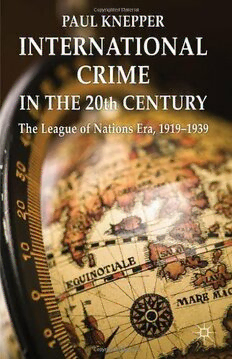
International Crime in the 20th Century: The League of Nations Era, 1919-1939 PDF
02011·0.308 MB·English
Most books are stored in the elastic cloud where traffic is expensive. For this reason, we have a limit on daily download.
Preview International Crime in the 20th Century: The League of Nations Era, 1919-1939
Description:
In the 1920s and 1930s, crime rose to the top of the agenda of global problems. Experts warned of worldwide crime waves in the wake of the first world war, migration and economic depression, and of a new generation of border-crossing criminals, known to the press as motor bandits and gangsters. The League of Nations organized institutions for suppressing the trade in dangerous drugs, traffic in women and terrorist violence. International voluntary organizations mobilized anti-crime campaigns and police forces formed what is now known as Interpol. The interwar period laid down the structure for international crime prevention that endures today and supplied the conceptual map of current global anxieties related to crime. To understand the organizational response to international crime now, it is essential to look back at problems these institutions were meant set up to address, problems shaped by such vexed notions as the foreign drug trafficker, women in music halls, political murder clubs and the international Jew.
See more
The list of books you might like
Most books are stored in the elastic cloud where traffic is expensive. For this reason, we have a limit on daily download.
